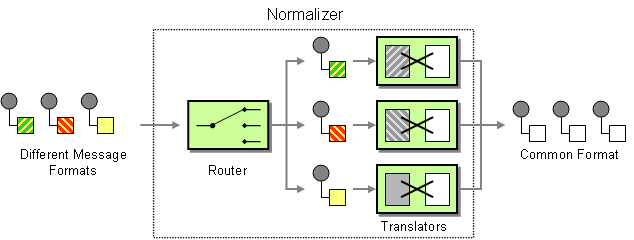Fuse 6 is no longer supported
As of February 2025, Red Hat Fuse 6 is no longer supported. If you are using Fuse 6, please upgrade to Red Hat build of Apache Camel.此内容没有您所选择的语言版本。
9.3. Normalizer
Overview
复制链接链接已复制到粘贴板!
The normalizer pattern is used to process messages that are semantically equivalent, but arrive in different formats. The normalizer transforms the incoming messages into a common format.
In Apache Camel, you can implement the normalizer pattern by combining a content-based router, which detects the incoming message's format, with a collection of different message translators, which transform the different incoming formats into a common format.
Figure 9.3. Normalizer Pattern
Java DSL example
复制链接链接已复制到粘贴板!
This example shows a Message Normalizer that converts two types of XML messages into a common format. Messages in this common format are then filtered.
Using the Fluent Builders
In this case we're using a Java bean as the normalizer. The class looks like this
XML configuration example
复制链接链接已复制到粘贴板!
The same example in the XML DSL
